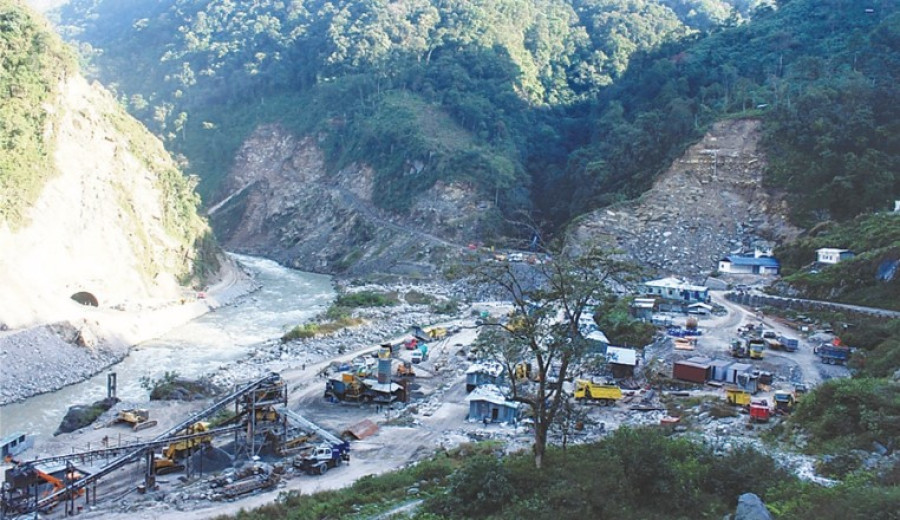Money
Nepal gifts 669MW Lower Arun to India’s SJVN
This is the third project to be undertaken by India on a single river, after 900 MW Arun-III and 695 MW Arun-IV projects.
Sangam Prasain
Weeks ahead of a proposed visit to India by Prime Minister Pushpa Kamal Dahal, the Investment Board Nepal has offered yet another hydropower project to the southern neighbour, through a negotiation window.
The 53rd meeting of the Investment Board Nepal chaired by the prime minister approved an investment worth Rs92.68 billion proposed by India’s state-owned Satluj Jal Vidyut Nigam (SJVN) to develop the 669 MW Lower Arun Hydroelectric Project.
According to a statement issued by the Investment Board on Thursday, the board of directors decided to form a “project development agreement negotiation committee’ led by the board’s chief executive officer, instructing it to submit the document of consensus to the board.
This is the third project undertaken, all through negotiation windows, on the Arun river after the 900 MW Arun-III and 695 MW Arun-IV hydroelectricity projects.
The three projects will generate nearly 2,300 MW electricity from the river in Sankhuwasabha district.
The Investment Board and the SJVN signed an agreement for the development of the Arun-III hydropower project in November 2014. Nepal will receive Rs348 billion over 25 years from Arun-III. The project developer will also provide 21.9 percent of the energy generated free of cost, which is worth Rs155 billion, plus another Rs107 billion in royalties.
In May 2022, Kulman Ghising, managing director of Nepal Electricity Authority, and Nandalal Sharma, chairman of the SJVN, signed the agreement in Lumbini for the development of Arun-IV on behalf of their respective governments.
Nepal will receive 21.9 percent, or 152 megawatts, of electricity for free as per the agreement from Arun-IV.
In July last year, Nepal signed a deal with the SJVN to develop the 679MW Lower Arun. The investment totalling Rs92.68 billion for the project was approved on Thursday.
The Lower Arun project will not have any reservoir or dam and will be a tailrace development of Arun-III, which will mean water re-enters the river for the Lower Arun project.
SJVN Chairman and Managing Director Nand Lal Sharma told the Indian media last year that they aim for projects generating 5,000 MW in Nepal by 2030.
Insiders see the hydropower diplomacy with India as a tool to continue cordial relations with New Delhi after Dahal turned to the Nepali Congress to remain at the helm after forcing the KP Sharma Oli-led CPN-UML to leave the coalition.
In August last year, Nepal formally awarded the much-touted West Seti Hydropower Project and Seti River Project in western Nepal to India through a negotiation window, nearly four years after China withdrew from it.
Investment Board Nepal signed a memorandum of understanding (MoU) with India’s state-owned NHPC Limited to develop the two projects—West Seti and Seti River (SR6)—joint storage projects totalling 1,200MW.
In January last year, the southern neighbour communicated to the independent power producers of Nepal that they must ensure there are no Chinese components in their hydropower projects to sell the electricity generated by them to India.
Multiple private sector power developers told the Post that they have received such communications from the Indian side at various forums of discussion.
More recently, Indian officials have hinted at blocking the supply of explosives to projects involving Chinese companies.
As the Kathmandu-Nijgadh Fast Track Project being developed by the Nepal Army has hired Chinese contractors for a number of tasks, suppliers said the project is also facing a shortage of explosives after not getting any from India.
After supply from the south halted, Nepal has received commercial explosives from China for the first time in several years to help Chinese contractors of various projects carry out the construction- and mining-related blasts.
India for months denied explosives to projects being undertaken by Chinese companies as developers or contractors.
According to sources privy to the prime minister’s visit to India, the visit proposed to happen in mid-April has been deferred till May.
The Ministry of Foreign Affairs has requested key ministries to submit the agendas to be signed with India during Dahal’s visit.
Meanwhile, the investment board said it approved an investment worth Rs167.57 billion for five hydroelectric projects on Thursday.
Of total approved investments, Rs146.2 billion is through foreign direct investment and Rs21.37 billion from domestic investors.
Apart from the 669 MW Lower Arun Hydroelectric Project, others are the 102 MW Upper Marsyangdi-1 (Rs33.19 billion), the 70 MW Dudhkoshi-2 Jaleshwar (Rs20.35 billion), the 70.3 MW Simbuwa Khola (Rs13.44 billion) and the 43 MW Upper Madi (Rs7.93 billion).
Among them, Rs146.2 billion foreign investment has been approved for three hydroelectric projects, including Lower Arun, Dudhkoshi-2 (Jaleshwar) and Upper Marsyandi hydropower project.
The board also approved the memorandum of understanding (MoU) to be signed with DIAG Industries GmbH Germany to establish a chemical fertiliser plant.
The board okayed Dabur Nepal's capital increment plan to boost its production capacity in Nepal.
The board granted permission to the Malaysia-based reNIKOLA Holdings to conduct a study on establishing Green Calcium Ammonium Nitrate (CAN) fertiliser plant in Nepal.




 6.84°C Kathmandu
6.84°C Kathmandu















